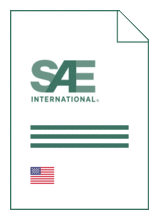
Standard [CURRENT]
SAE AMS 3258A:2011-09-23
Sealing Compound, Polythioether For Aircraft Windshields and Canopies, For Use Up to 300°F (149°C)
- Publication date
- 2011-09-23
- Original language
- English
- Pages
- 16
- Publication date
- 2011-09-23
- Original language
- English
- Pages
- 16
Product information on this site:
Quick delivery via download or delivery service
Buy securely with a credit card or pay upon receipt of invoice
All transactions are encrypted
Short description
This document has been declared "Stabilized" and will no longer be subjected to periodic reviews for currency. Users are responsible for verifying references and continued suitability or technical requirements. New technology may exist. This specification covers a polythioether based sealing compound supplied as a two-component system suitable for application by brush, or by extrusion gun or spatula. This production has been used typically for sealing aircraft windshields and canopies. This includes both sealing between the windshield/canopy and the aircraft structure for pressure sealing, and sealing around the windshield/canopy for weather sealing, but usage is not limited to such applications. The sealing compound cures at room temperature and may have an accelerated cure at higher temperatures. The sealing compounds are usable from -65 to 300 °F (-54 to 149 °C).
Loading recommended items...
Loading recommended items...
Loading recommended items...

